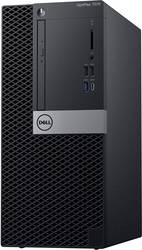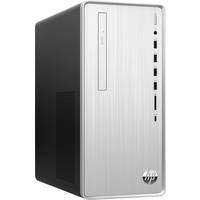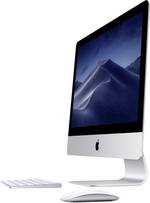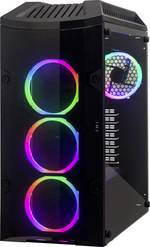All products
Guide
This text is machine translated.
PCs » Businesses and private households can no longer be imagined without them
The success story of the computer is coming to an end. Without powerful PC systems, a modern economy as we know it would be absolutely unthinkable. Today, computers are found everywhere: From doctors' practices to retail and craft businesses to industry. See our guide to learn what types of PCs are and what they can be used for.
-
Application areas of computers
-
Office computers and all-in-one PCs
-
Laptops - the portable alternative
-
Workstations and servers
-
Mini PCs and industrial computers
-
Special case Gaming PC
-
What should ich be careful when buying a computer?
-
Our practical tip: Make sure that the PC is adequately ventilated!
-
FAQ - frequently asked questions about computers
Application areas of computers
Desktop computers and notebooks are used almost everywhere – whether in public administration, in hospitals or in the small grocery store around the corner. No industry can do without a desktop PC today. The work done with such a computer is varied.
It can be the management of stocks or complex calculations in a research laboratory. Editors write their articles on the computer and the policeman also records an ad on a PC. Especially in connection with the Internet, the application possibilities are virtually limitless. Microsoft Windows is used as the operating system in most cases. One possible alternative is Linux and Mac OS for Apple Desktops. In our range you will find a wide range of different PCs, ranging from barebones to workstations to refurbished PCs.
Office Computer and All-in-One-PCs
Office Computer
An Office PC system must not interfere with work. Therefore, it is of particular importance that such a desktop computer causes the lowest possible operating noise. The PC housing should also take up little space.
The more computers used in an office, the more important the question of power consumption becomes. Usually, an office computer does not require a particularly strong AMD or Intel processor.
The graphics unit integrated in many CPUs is usually sufficient for the Office applications used.
All-in-One-PCs
Whenever a PC system is used not only as a pure implement, but also visually something, the hour of an all-in-one solution beats:
It is a monitor in which the complete hardware is housed. The advantage of an all-in-one is the small space requirement.
The Apple iMac, which is often found in medical rooms, advertising agencies and design offices, is a pioneer in this field.
Workstations and Server
Workstations
A professional workstation requires significantly more performance. These computers are used for demanding software and compute-intensive applications such as 3D rendering or CAD.
AMD and Intel processors with 8 or more cores are used for this purpose. In most cases, a simple quad-core CPU is already too weak. Some workstations even have two processors built in the same way.
In addition to high processor performance, a workstation also requires a lot of memory and often multiple hard drives.
Servers
Servers must also be particularly powerful. Without servers, there is no Internet and most corporate networks are useless without them.
Such computers require a lot of computing power, and special processors such as AMD Epyc or Intel Xeon, which have a large number of cores, are used for this purpose.
A lot of RAM is also required as well as a high storage capacity.
Mini PCs and industrial computers
PCs (Mini)
Mini PCs are computers with particularly compact dimensions. The devices are sometimes so small that they can be easily hidden behind a monitor with a special holder and thus serve as a full-fledged desktop computer.
Here, too, there are very powerful models with which even complex calculations can be carried out.
However, the upgradeability is very limited due to the small housing, there is usually no space for a dedicated graphics card.
Industrial computers
Industrial PCs are usually robust: They are often very compact and are used, among other things, in the fields of robotics, automation and industrial communication.
Such computers have interfaces that are rarely found in a normal desktop, but are still of great importance for industrial applications.
This includes parallel and serial ports and usually several network ports. The operating system is often Windows, but also Linux or Android. The so-called single-board computers are also found in the industrial sector, which are a good bit smaller and are often used in the IoT sector.
Laptops – the portable alternative
Laptops and notebooks are mainly used by employees working in the field service. To do this, the computers must be as light and robust as possible.
Laptops with a screen size of less than 13 inches are particularly suitable for mobile use. Long battery life is more important than extreme performance in such devices.
Instead of a conventional hard disk, an SSD resistant to vibrations is the first choice, especially for mobile devices. To help you work more smoothly, your laptop should have at least 8 GB DDR4 RAM, depending on the software you are using.
Special case Gaming PC
Gaming PCs are primarily intended for entertainment. Such devices are not only simple desktop PCs, but real lifestyle objects.
Many of these computers have windows that allow you to view the built-in hardware. LED lighting is another trend: Many hardware manufacturers offer graphics cards, fans and even RAM modules with integrated RGB lighting.
In order to display modern 3D games in high resolutions on the monitor, a gaming PC requires a high CPU and graphics performance. The trend is currently toward AMD and Intel processors with 6 or better 8 physical cores.
In addition, a strong graphics card is a must! Such a graphics accelerator can easily reach the price of a fully-equipped office PC. With the main memory it may be at least 16 GB DDR4-RAM, gladly also more. The same criteria apply to gaming notebooks. Corresponding models are therefore usually very expensive and often quite difficult.
What should ich be careful when buying a computer?
It always depends on what the computer is to be used for. An Office PC does not require a gaming graphics card or 32 GB DDR4 RAM. Identify your exact needs before you buy, avoiding unnecessary spending on computer components you don't need at all.
Usually complete PCs, with the input devices and a monitor supplied immediately, are a good choice for getting started. If you do not want to use a complete PC, you can use a PC configurator to compile your individual computer with just a few clicks. For simple office tasks, a computer with 8 GB-DDR4-RAM and a dual-core CPU is still completely sufficient today. If the computer is also used for more complex tasks, 16 GB is a good choice in most cases. More memory is usually required only when professional video editing, 3D rendering or CAD programs are running.
Then it should be at least a quad-core processor, but future-proof models with 6 or 8 cores. A 1000 GB HDD should be the standard today, smaller hard drives barely cost less. Depending on how memory intensive your applications are, even more capacity is possible. Ideally, install the operating system on a fast SSD. This allows you to benefit from a much faster boot process and also get a highly responsive system.
Our practical tip: Make sure that the PC is adequately ventilated!
Do not place your computer directly in front of a radiator or in the blazing sun. Otherwise, the temperatures in the housing increase quickly. The fans and CPU coolers are then no longer able to cool the components sufficiently. As a result, cpu and graphics card take down and you have less power available.
FAQ – frequently asked questions about computers
What was the most important interface for a PC or laptop?
The most important interface for connecting peripherals such as a printer is the USB port. A distinction must be made between USB 2.0, USB 3.0 and USB 3.1. USB 2.0 has the slowest transfer speed, while USB 3.0 and USB 3.1 offer significantly faster transfer rates. Thunderbolt, which is usually implemented via a USB-C connection, is of increasing importance. Today, however, monitors are mainly connected via HDMI.
What was a Barebone?
A Barebone is a computer case in which a mainboard is already installed. Most of the time, this is a particularly small housing that requires a special motherboard. Other components, such as a power supply and in some cases a processor, may also be included in the delivery. RAM, graphics card and hard disk or SSD hard disk usually have to be purchased separately.
Should ich select a processor from AMD or Intel?
This is ultimately a matter of personal taste. For many years, Intel's CPUs have been a little faster, this paper seems to be turning to the new AMD processors. Although the differences can be measured in benchmarks, they are unlikely to be of any significance to most users.
What accessories do ich need for my computer?
In addition to a keyboard and a mouse, an external hard disk or at least a USB stick with a corresponding size is recommended for data backup. A USB hub that you can place on your desk is also helpful. Thus you always have the USB-connections in your range.










